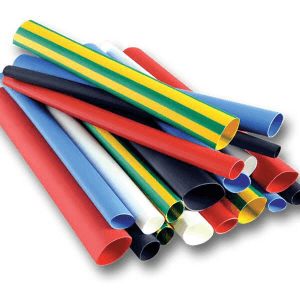
How do you measure heat shrink? If it weren’t for the shrinking, then it’s somewhat like buying a coat. You measure the person and then buy a coat to fit.
Obviously the shrinking makes it more complex. Before we get into that though, it’s important to remember one thing:
Heat shrink is first made to the diameter it will be when it is shrunk. Then it is expanded/stretched and packed ready for sale.
So when you buy heat shrink, its shrunk dimensions are already known because it has already been those dimensions.
Now we’ve got this explained, we can move on to the actual measuring. Please note this is a very broad guide. For detailed advice, head down to the bottom of this page.
The internal diameter (ID for short)
There are two of these:
1) The Expanded (or supplied) Internal Diameter – EID for short
This is a minimum value for the stretched or expanded internal diameter, it could be bigger than expected, but it won’t be bigger than the next size up.
2) The Recovered (or shrunk) Internal Diameter – RID for short
This is the internal diameter for when the heat shrink has shrunk. It is always a maximum value and is very specific. It might go smaller, but it won’t shrink to a bigger value. (If it did, it could be too loose).
How is the internal diameter measured?
During the manufacturing process, heat shrink tubing is graded by using rods of specific diameters. If it’s a snug fit, then the rod diameter is noted.
How do you determine the heat shrink you need?
You measure the thing to be covered, not the heat shrink.
Measuring for a simple sleeve:
If you have a 6mm cable and you want a heat shrink sleeve (a colour coded label) just around the outer sheathing of the cable, the diameter of the cable is 6mm. That means you need:
- a Recovered Internal Diameter of just under 6mm
- an Expanded Internal Diameter of greater than 6mm
Measuring for a simple sleeve that has to pass over connectors:
Suppose there’s a large connector at each end of the 6mm cable. That means a bigger expanded diameter. You’ll need:
- a Recovered Internal Diameter of just under 6mm
- an Expanded Internal Diameter of greater than that needed to slide over the connector
If the connector is rectangular for example, then you will need to work out the external dimensions of the connector block, add them up and divide by two to get the lay flat measurement – add a little more to be on the safe side and you have the expanded internal diameter.
Measuring for a sleeve to cover the cable’s outer sheath and bare wires:
Now the shrunk sleeve has to be small enough to touch the bare wire. Let’s say the bare wire has a 2mm diameter. The cable itself (with sheathing) is still 6mm. That means you need:
- a Recovered Internal Diameter of just under 2mm
- an Expanded Internal Diameter of greater than 6mm
- because the wire is one third the cable diameter, choose a 3:1 or higher heat shrink ratio
Heat shrink wall thickness
Obviously when things stretch, they get thinner. The more stretched they are, the thinner they get. The opposite is also true. The more heat shrink tubing shrinks, the thicker it gets.It’s important to know that if heat shrink is not allowed to recover to its specified RID, then it won’t recover to its specified thickness either. It will be thinner than expected.
So, if the heat shrink wall thickness is also important to you, then you’ll need to specify that too.
Change in length – longitudinal change
Also known as “long change”.There is a small amount shrinkage length-ways. This depends on the tubing sizes and type but it normally means the tubing shrinks by about 10%. If you need a 1 meter length, order 1.1 meters. If you need a very exact length, then do look at the heat shrink specifications to work out what you’ll need to factor in.
Delicate application?
As it shrinks, heat shrink doesn’t have the strength to crush the component it is covering. It’s not like a boa constrictor with muscles!
What next?
As we wrote earlier, the above is all about how to measure heat shrink in very broad strokes.To go through this in finer detail, we recommend you read our advice on choosing heat shrink. Alternatively, to talk to an experienced specialist:





